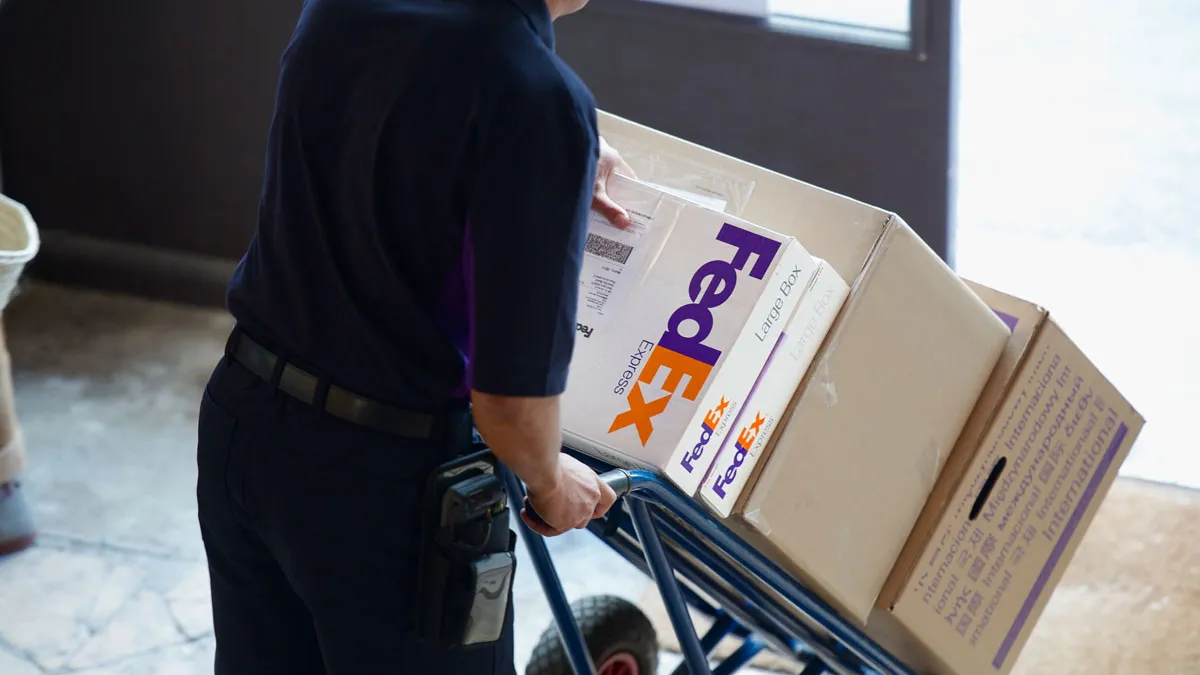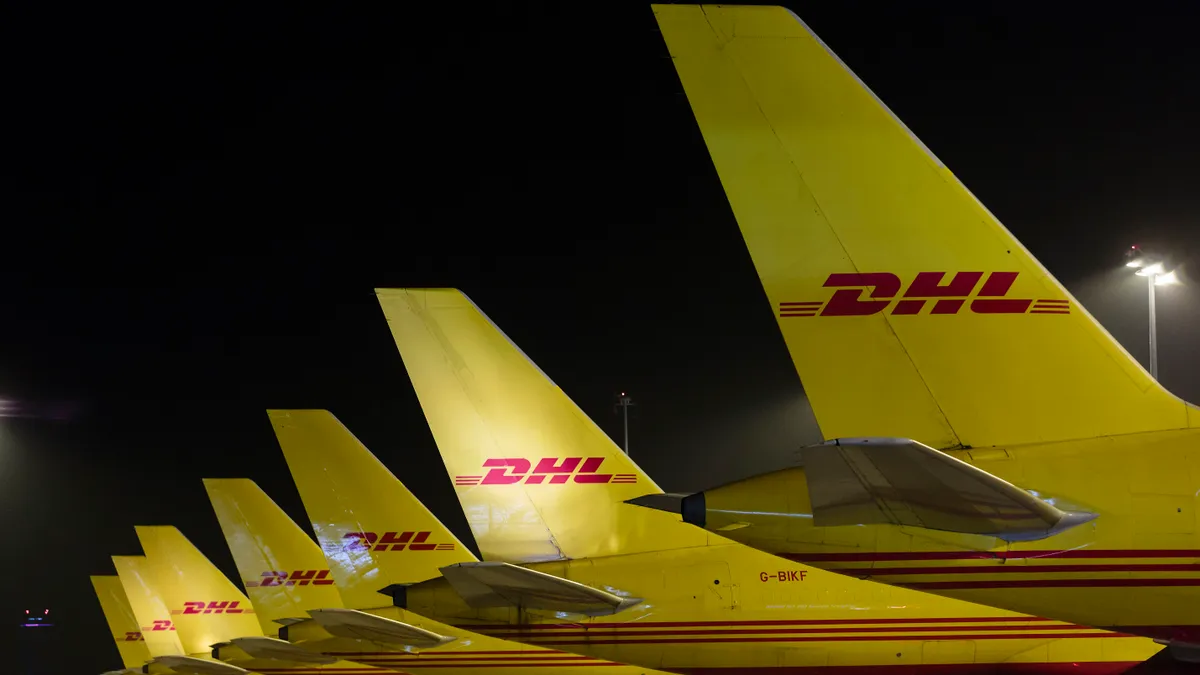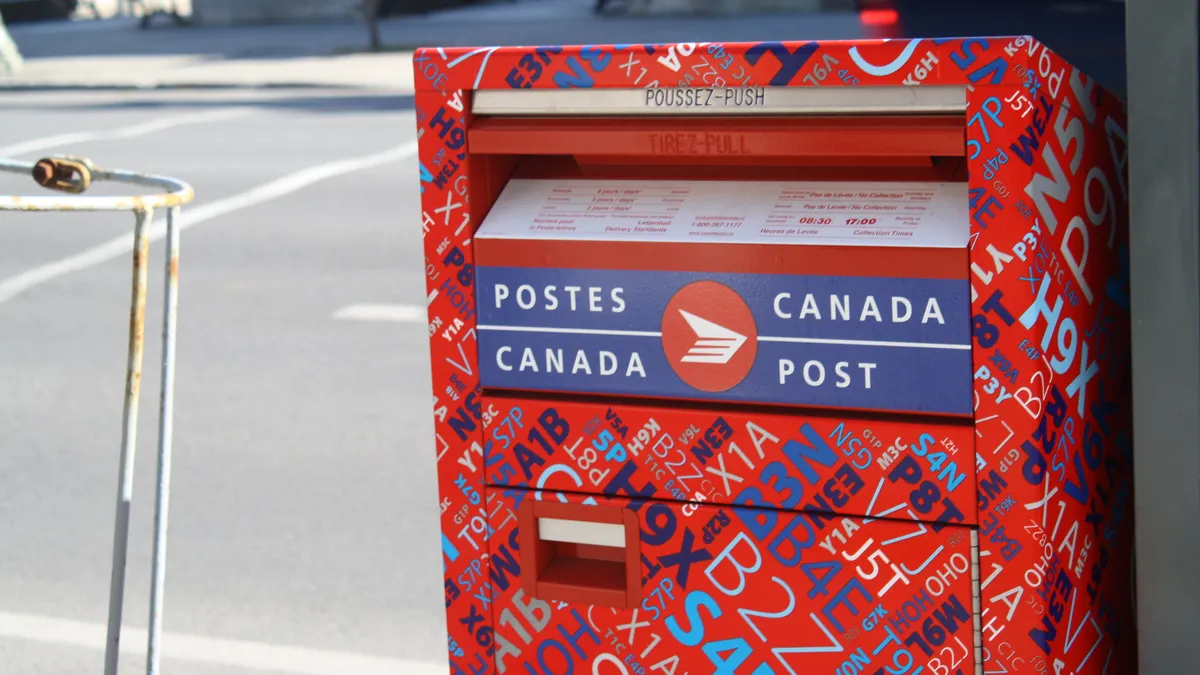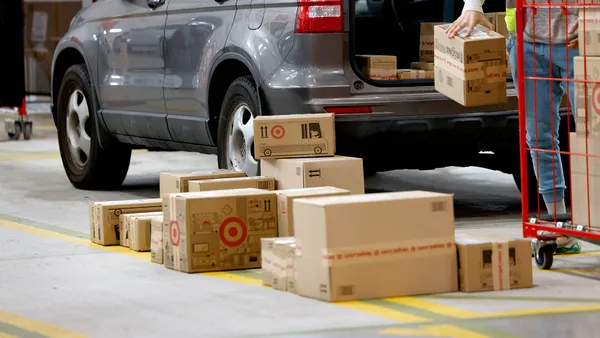Delivery will make or break this holiday season.
Early Black Friday results showed that retailers landed $7.4 billion in online purchases, while Cyber Monday was the biggest shopping day on record in the United States, with $7.9 billion in sales. All of that spending is fantastic for retailers. But someone has to deliver the merchandise.
Delivery companies have been anticipating the surge of parcel volume throughout the season. The United States Postal Service forecasted that it would deliver 800 million packages between Thanksgiving and New Year's Day.
>UPS announced it would hire 100,000 workers for its peak season, with "daily package deliveries nearly doubling compared to our average of 20 million per day," according to UPS COO Jim Barber. FedEx hasn't released a total expected holiday parcel delivery estimate for 2019, but expected it would handle a record 33 million packages on Cyber Monday. Additionally, Amazon hired 200,000 workers to help with peak season in seasonal roles across fulfillment, sortation and delivery functions.
While the expected timeline of delivery is speeding up, retailers are getting creative on how to get products to consumers. Some have partnered with courier services to maximize delivery services within brick-and-mortar locations. Others are realizing the potential of buy online, pick up in-store (BOPIS) to save on last-mile costs. While retail channels are becoming more and more blurred, retailers are understanding how delivery options can give them an edge over the competition.
The year of the partnership
Delivery services and retailers deepened a symbiotic relationship in 2019. Or perhaps it started to dawn on the two entities that their strategic operations were closer aligned than first realized.
For retailers, the name of the game is getting people through the door. The pressure to optimize performance is on. As of this fall, retailers had closed about 7,300 stores — more than in any other full year on record. Additionally, research from accounting and consulting firm BDO revealed that retail bankruptcy filings accelerated this year compared to last, and more retail Chapter 11 filings culminated in liquidation.
A partnership with a retailer can be highly beneficial to a delivery company yearning to save on last-mile costs, whether it is during the holidays or throughout the year. Grouping shipments together at a specified location can streamline logistics by reducing the number of miles driven and stops made, which ultimately decreases costs and the per package carbon delivery footprint.
"It is less expensive for UPS and FedEx to leave packages, multiple packages in one place, as opposed to delivering each package to a different door. So, if there is enough volume it would be very cost effective," said Elliot Rabinovich, AVNET professor of supply chain management at Arizona State University, in an interview with Retail Dive.
Kohl's, for one, found success when it decided to host Amazon returns in its stores. After the launch, Earnest Research compared participating stores in the Chicago area to regular stores and found the former had increased sales, transactions and customer growth compared to other locations. Therefore it wasn't a surprise when the retailer decided to roll out the Amazon return service to all of its locations.
Amazon, which doesn't have many brick-and-mortar locations of its own, discovered a means of grouping items en route to return centers rather than dealing with them on a per-package basis.
It wasn't long before other retailers followed suit.
This fall, UPS revealed the completed rollout of UPS Access Points to over 1,000 Michael's stores. Earlier in the year, the delivery company also announced package pickup and drop off with Advance Auto Parts and CVS Pharmacy locations. UPS has added more than 5,800 UPS Access locations via those collaborations with an eye to expand to 20,000 locations by the end of 2020.
Robin Hooker, director of global product innovation at UPS, stated those tie-ups offer a unique opportunity. "E-commerce is growing. They [consumers] need to receive packages on their terms. In many cases, they're concerned about security or convenience, and they live in places where porch delivery isn't always optimal," Hooker stated in an interview with Retail Dive. "We built an access point network that addresses that, but as we began to explore partnerships with retailers that are national chains, we found that there's definitely some lift when you combine two big brands like UPS and CVS Pharmacy, UPS and Michael's, UPS and Advanced Auto."
The CVS Pharmacy deal, in particular, feels primed for further technological advancements. UPS Flight Forward announced a deal with CVS Pharmacy, AmerisourceBergen and Kaiser Permanente to deliver healthcare supplies including pharmaceuticals and medical supplies. The reason behind the partnership includes increased performance, lower costs and — perhaps most immediately felt — decreased delivery delays due to road congestion.
"In New York City, many staff at doorman buildings are overwhelmed by package volumes."

Jonathan Root
Senior Vice President at Moody's Investors Service
Not to be outdone, over the summer FedEx and Dollar General partnered to offer in-store package pickup and dropoff at 8,000 Dollar General locations. The move promises to increase FedEx's retail presence to about 62,000 stores in the United States, including in rural communities. The deal means that about 90% of Americans will live within five miles of a FedEx Hold retail location, according to the delivery company. FedEx Office also opened its 2,000th retail location this year (It must be noted, too, that the expansion of FedEx in Dollar General retail locations came at around the same time the company decided to end its contracts with Amazon.)
And while it may feel like courier services at brick-and-mortar stores popped up overnight, all parties involved have been working to further their relationships with consumers, according to Rabinovich. "I think this is part of a trend of companies like FedEx and UPS trying to make their services more accessible," he said. "They're basically trying to meet consumer needs in many different ways."
Convenience, too, is a primary driver of the expansion of shipment and return options into brick and mortar retail. Service delivery companies "look for partnerships with Walgreens and others because they realize consumers use convenience stores with certain frequency. They go there to do other things and so figure by leaving packages there or receiving packages there they're not imposing on consumers additional effort," Rabinovich said.
Package delivery in urban areas
What may push the growing ubiquity of delivery to retail stores is the increasing difficulty of navigating logistics in dense urban areas. A recent report by The New York Times revealed that 1.5 million packages are delivered daily in New York City, causing gridlock, slowing traffic, and resulting in over 471,000 parking violations for UPS and FedEx in 2018. An additional New York Times report discovered that over 90,000 packages are stolen each day in New York City, causing residents to rethink how they access their own mail.
Those issues are opening space to rethink how urban consumers receive packages. "[I]n New York City, many staff at doorman buildings are overwhelmed by package volumes. For buildings that restrict deliveries or are not staffed, third-party delivery and pick-up locations make sense," said Jonathan Root, senior vice president at Moody's Investors Service.
Rabinovich also sees the proliferation of retail and delivery services expanding in areas with dense populations. "The type of segment that would probably benefit from it is urban markets — high density urban markets where people don't drive," he said. "They don't want things to get stolen or lost."
The holidays and BOPIS
In a November interview with CNBC, Target CEO Brian Cornell illustrated the growing importance of buy online, pick up in-store options when he revealed that the retailer's costs drop 90% when customers utilize BOPIS services.
A study by Coresight Research noted that such services are increasingly popular. About 50% of U.S. consumers who use BOPIS have picked up goods from Walmart in the past year, and about 34% have done so with a Target location.
Additional findings by e-commerce firm CommerceHub stated that 93% of consumers who pick up purchases in-store this holiday season will do so to save time and money. Last year was the biggest year on record for the service, with a 47% growth rate among retailers, according to Adobe Analytics.
Yet, BOPIS may grow in importance this season due to six fewer shopping days between Thanksgiving and Christmas. Consumers may favor it to reduce potential problems with on-time delivery of goods, especially since the average delivery delay rate is forecasted to be around 9%, but could surpass 16.5% in some states. Those people in densely populated cities and rural areas with limited connectivity are predicted to see the highest rate of delays during this holiday season.
Investing in BOPIS may have long-term benefits for retailers beyond the holidays. A survey by Doddle showed that 50% of respondents decided where to shop online based on whether they could pick up something at a brick-and-mortar location. Furthermore, once in a physical store, 85% of shoppers said they have made additional purchases while picking up what they had already purchased online.
The future of retail and delivery services
While alliances between couriers and retailers seem to be big business this year, analysts question if it is going to become a primary method of delivery in the future. Moody's Root believes the partnerships that have already been established are not going to go much further. "We do not see UPS and FedEx entering many more partnerships with national retailers for delivery and pickup of customers' packages and returns, thus we do not see these partnerships blanketing the landscape," he said.
Rabinovich agrees. "Anything that you introduce — nothing is permanent," he said of partnerships between retailers and delivery companies. "The temporary is permanent. Everything is subject to change." The one exception, though, may be with those logistically difficult urban areas. "If it really takes off then it could be a game-changer. Do I see it tak[ing] off in other areas from urban locations? I doubt it. But, it could be quite, quite helpful, quite popular in an urban area."























